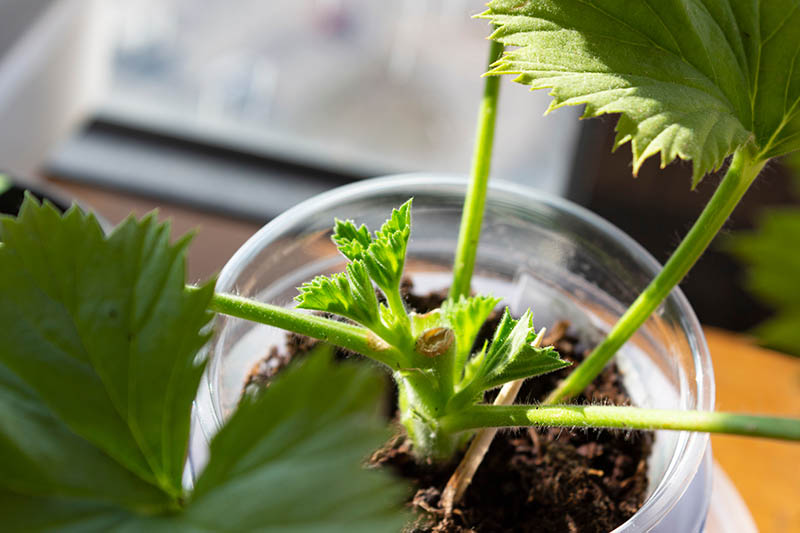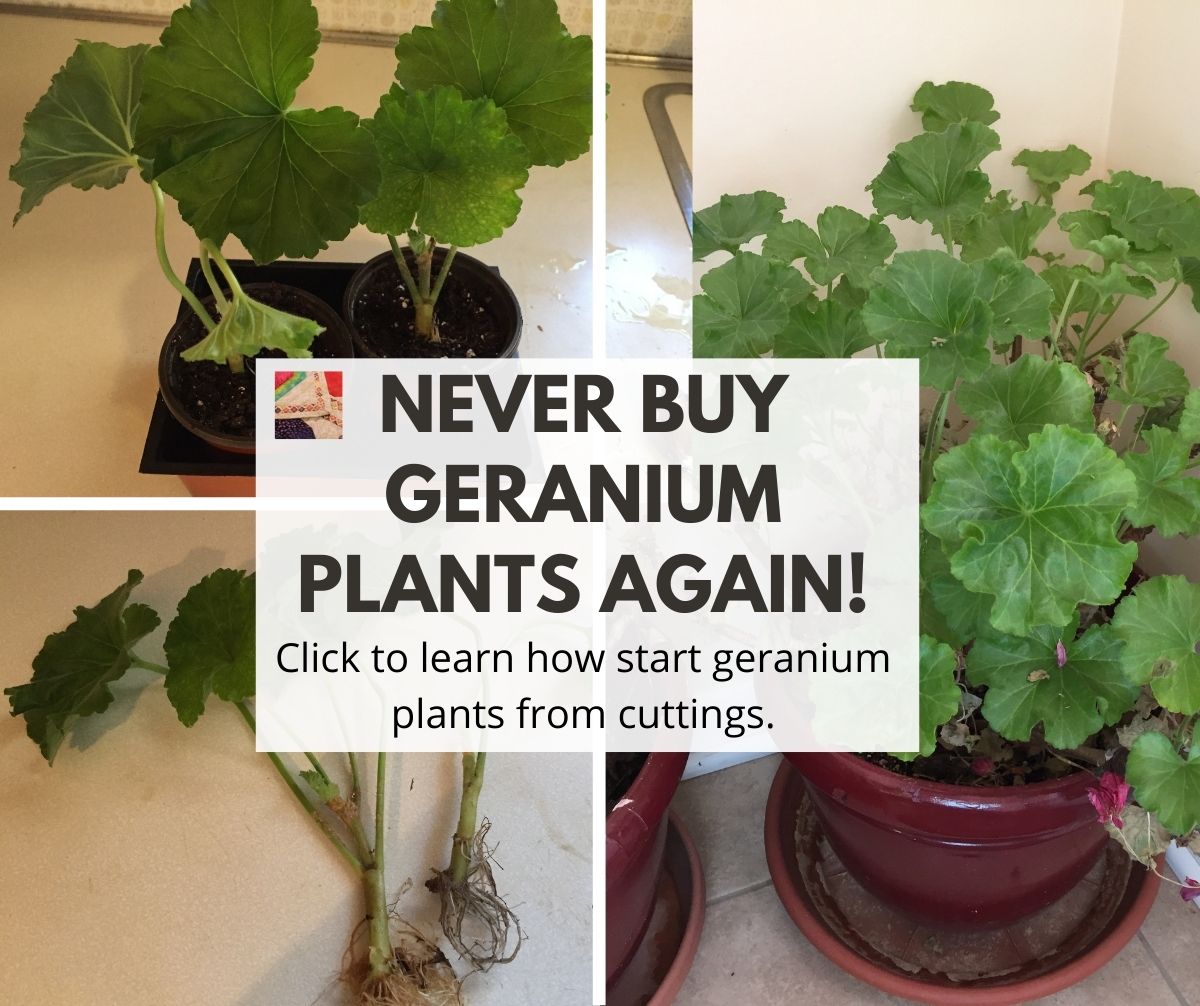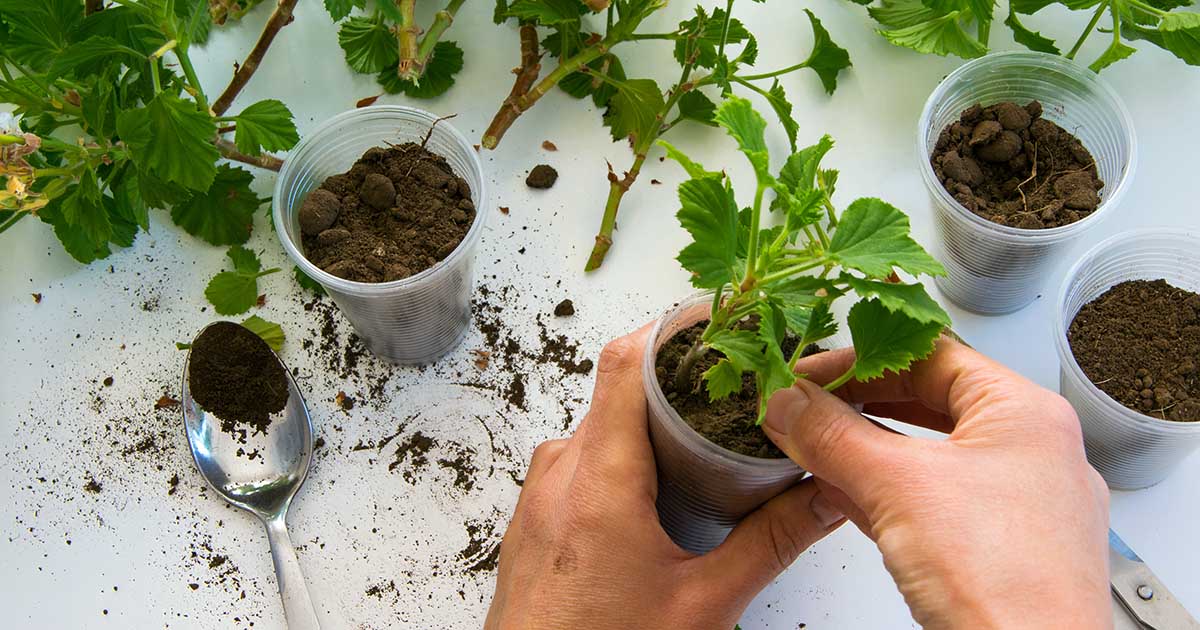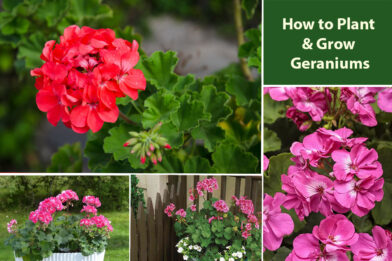Unlocking the Secrets of Geranium Cuttings
Growing geraniums from cuttings is a simple and effective way to reproduce favorite varieties and share plants with friends. By choosing healthy parent plants and taking cuttings at the right time, gardeners can increase their chances of success. Geraniums are popular flowering plants known for their vibrant colors, delicate petals, and versatility in gardens and indoor spaces. With the ability to grow geraniums from cuttings, enthusiasts can easily propagate new plants and enjoy their beauty year-round.
To begin, it’s essential to select healthy parent plants with desirable traits such as vibrant colors, robust growth, and disease resistance. Look for plants with an abundance of fresh growth, as these will provide the best material for cuttings. The ideal time for taking cuttings depends on the type of geranium and the climate. In general, spring and summer are the best seasons for taking cuttings, as the plants are actively growing and producing new stems.
When taking cuttings, it’s crucial to choose stems with at least two nodes, as these will provide the necessary energy for rooting. Cuttings can be taken from the tips of stems or from the middle section, depending on the desired length and thickness. By following these simple guidelines, gardeners can unlock the secrets of geranium cuttings and start growing their own plants from scratch.
For those interested in learning how to grow a geranium from a cutting, the process is relatively straightforward. By following the steps outlined in this article, enthusiasts can increase their chances of success and enjoy the beauty of these stunning flowering plants. Whether you’re a seasoned gardener or just starting out, growing geraniums from cuttings is a fun and rewarding experience that can add a touch of elegance to any garden or indoor space.
Preparing the Perfect Cutting: Tips and Techniques
When it comes to taking geranium cuttings, the goal is to create a perfect replica of the parent plant. To achieve this, it’s essential to use the right tools and techniques. Start by selecting a healthy stem with at least two nodes, as these will provide the necessary energy for rooting. Use a sharp, sterile knife or pruning tool to make a clean cut just above a node, at a 45-degree angle. This will help the cutting to absorb water and nutrients more efficiently.
The ideal length and thickness of the cutting will depend on the type of geranium and the desired outcome. For most varieties, a cutting of around 3-4 inches (7-10 cm) in length and 1/4 inch (6 mm) in thickness is suitable. Remove lower leaves, leaving only two or three sets of leaves at the top of the cutting. This will help to prevent the cutting from drying out and reduce the risk of fungal diseases.
When handling the cuttings, it’s crucial to be gentle to avoid damaging the delicate tissues. Hold the cutting by the leaves, rather than the stem, to prevent crushing or bruising. Place the cutting in a container of water or a rooting medium, making sure that the node is fully submerged. This will help to stimulate root growth and increase the chances of successful propagation.
For those looking to learn how to grow a geranium from a cutting, it’s essential to understand the importance of making clean cuts and handling the cuttings gently. By following these simple tips and techniques, gardeners can increase their chances of success and enjoy the beauty of these stunning flowering plants.
In addition to using the right tools and techniques, it’s also important to consider the timing of taking cuttings. For most geranium varieties, the best time to take cuttings is during the spring and summer months when the plants are actively growing. This will help to ensure that the cuttings are taken from healthy, vigorous stems, which will increase the chances of successful propagation.
Rooting Geranium Cuttings: The Art of Encouraging Growth
Once the geranium cuttings are prepared, it’s time to encourage root growth. There are several methods for rooting geranium cuttings, each with its own advantages and disadvantages. Water rooting, soil rooting, and using rooting hormones are three popular methods that can increase the chances of successful propagation.
Water rooting involves placing the cuttings in a container of water, making sure that the node is fully submerged. This method is ideal for geraniums, as it allows for easy observation of root growth. Change the water every few days to prevent bacterial growth and maintain oxygen levels. Roots should start to develop within 1-2 weeks.
Soil rooting involves planting the cuttings directly into a pot or tray filled with a well-draining rooting medium. This method is more challenging, as it requires careful monitoring of moisture levels and temperature. However, it can be more effective, as the cuttings are able to develop a stronger root system.
Using rooting hormones can increase the chances of successful propagation by stimulating root growth. These hormones can be applied to the cut end of the stem or mixed into the rooting medium. However, it’s essential to follow the instructions carefully, as excessive use can damage the cutting.
Regardless of the method chosen, it’s crucial to provide the right conditions for root growth. Maintain a consistent temperature between 65-75°F (18-24°C), and ensure high humidity levels. Avoid overwatering, as this can lead to root rot and other problems.
For those looking to learn how to grow a geranium from a cutting, understanding the different methods for rooting is essential. By choosing the right method and providing the right conditions, gardeners can increase their chances of success and enjoy the beauty of these stunning flowering plants.
In addition to the methods mentioned above, there are several tips and tricks that can increase the chances of successful rooting. For example, using a heating mat or a propagation tray can help to maintain a consistent temperature and humidity level. Providing adequate light, but not direct sunlight, can also promote healthy root growth.
Creating the Ideal Environment for Geranium Cuttings
Once the geranium cuttings are prepared and rooted, it’s essential to provide the ideal environment for them to grow and thrive. The right temperature, humidity, light, and watering conditions can make all the difference in the success of your propagation efforts.
Temperature is a critical factor in the growth and development of geranium cuttings. Most varieties prefer daytime temperatures between 65-75°F (18-24°C) and nighttime temperatures around 55-65°F (13-18°C). Avoid placing the cuttings in areas with drafts or extreme temperature fluctuations.
Humidity is also essential for geranium cuttings, as it helps to maintain the moisture levels in the soil and prevent water stress. You can increase the humidity around your cuttings by placing the pot on a tray filled with water and pebbles or using a humidifier.
Light is another crucial factor in the growth and development of geranium cuttings. Most varieties prefer bright, indirect light, but not direct sunlight, which can cause scorching. East- or west-facing windows are ideal for geranium cuttings.
Watering is also critical, as geranium cuttings require consistent moisture levels to root and grow. Water the cuttings gently but thoroughly, making sure not to overwater, which can lead to root rot and other problems.
By providing the ideal environment for your geranium cuttings, you can increase the chances of successful propagation and enjoy the beauty of these stunning flowering plants. For those looking to learn how to grow a geranium from a cutting, understanding the importance of temperature, humidity, light, and watering conditions is essential.
In addition to the factors mentioned above, it’s also essential to maintain good air circulation around your geranium cuttings. This can help to prevent fungal diseases and promote healthy growth. You can improve air circulation by placing the pot on a pedestal or using a fan to circulate the air.
By following these tips and providing the ideal environment for your geranium cuttings, you can enjoy the beauty and fragrance of these stunning flowering plants for years to come.
Nourishing Your Geranium Cuttings: Fertilization and Care
Fertilizing your geranium cuttings is essential for promoting healthy growth and development. A balanced fertilizer that is high in phosphorus will encourage root growth and development, while a fertilizer that is high in nitrogen will promote leaf growth and development.
When it comes to fertilizing your geranium cuttings, it’s essential to use a fertilizer that is specifically designed for cuttings and seedlings. These fertilizers are typically lower in nitrogen and higher in phosphorus than regular fertilizers, which makes them ideal for promoting root growth and development.
In addition to fertilizing your geranium cuttings, it’s also essential to provide them with regular watering, pruning, and pest management. Water your cuttings gently but thoroughly, making sure not to overwater, which can lead to root rot and other problems.
Pruning your geranium cuttings is also essential for promoting healthy growth and development. Remove any dead or damaged leaves or stems, and trim back the cutting to encourage bushy growth and prevent legginess.
Pest management is also crucial when it comes to growing geraniums from cuttings. Check your cuttings regularly for signs of pests, such as aphids, whiteflies, and spider mites, and treat them promptly if you notice any problems.
By providing your geranium cuttings with the right fertilization, watering, pruning, and pest management, you can promote healthy growth and development and increase the chances of successful propagation. For those looking to learn how to grow a geranium from a cutting, understanding the importance of proper care and maintenance is essential.
In addition to the tips and advice provided above, it’s also essential to monitor your geranium cuttings regularly for signs of disease or pests. Regular monitoring can help you catch any problems early, which can prevent them from becoming more serious and reduce the risk of losing your cuttings.
By following these tips and providing your geranium cuttings with the right care and maintenance, you can enjoy the beauty and fragrance of these stunning flowering plants for years to come.
Common Challenges and Solutions: Troubleshooting Geranium Cuttings
When growing geraniums from cuttings, there are several common challenges that may arise. Rooting failure, pests, and diseases are just a few of the issues that can affect the success of your propagation efforts. However, with the right knowledge and techniques, you can overcome these challenges and enjoy the beauty of your geraniums.
Rooting failure is one of the most common challenges when growing geraniums from cuttings. This can be caused by a variety of factors, including poor cutting quality, inadequate rooting medium, and insufficient moisture. To overcome rooting failure, make sure to take high-quality cuttings, use a well-draining rooting medium, and maintain consistent moisture levels.
Pests are another common challenge when growing geraniums from cuttings. Aphids, whiteflies, and spider mites are just a few of the pests that can affect geraniums. To control pests, use insecticidal soap or neem oil, and make sure to inspect your plants regularly for signs of infestation.
Diseases are also a common challenge when growing geraniums from cuttings. Root rot, leaf spot, and powdery mildew are just a few of the diseases that can affect geraniums. To control diseases, use fungicides, maintain good air circulation, and avoid overwatering.
By understanding the common challenges that may arise when growing geraniums from cuttings, you can take steps to prevent them and ensure the success of your propagation efforts. For those looking to learn how to grow a geranium from a cutting, troubleshooting common challenges is an essential part of the process.
In addition to the tips and advice provided above, it’s also essential to monitor your geranium cuttings regularly for signs of stress or disease. Regular monitoring can help you catch any problems early, which can prevent them from becoming more serious and reduce the risk of losing your cuttings.
By following these tips and being proactive in your care and maintenance, you can overcome common challenges and enjoy the beauty and fragrance of your geraniums for years to come.
Transplanting and Establishing Your New Geranium Plants
Once your geranium cuttings have developed a robust root system and are growing well, it’s time to transplant them into larger pots or directly into the garden. This process can be a bit tricky, but with the right techniques, you can ensure a successful transition.
Before transplanting, make sure to harden off your geranium cuttings by gradually exposing them to outdoor conditions over the course of 7-10 days. This will help them adjust to the change in temperature, humidity, and light.
When transplanting, choose a pot that is at least 1-2 sizes larger than the original pot. Use a well-draining potting mix and gently remove the cutting from its pot. Inspect the roots and trim any that are circling or damaged.
Plant the cutting in the new pot, making sure the soil level is the same as it was in the original pot. Water thoroughly and provide support if necessary.
If transplanting directly into the garden, choose a location that receives full sun to partial shade and has well-draining soil. Dig a hole that is twice as wide and just as deep as the pot. Add organic matter such as compost or manure to improve soil fertility and drainage.
Plant the cutting in the hole, making sure the soil level is the same as it was in the pot. Water thoroughly and provide support if necessary.
By following these steps, you can successfully transplant your geranium cuttings and establish them in their new environment. For those looking to learn how to grow a geranium from a cutting, transplanting is an essential part of the process.
In addition to the tips and advice provided above, it’s also essential to monitor your transplanted geraniums regularly for signs of stress or disease. Regular monitoring can help you catch any problems early, which can prevent them from becoming more serious and reduce the risk of losing your plants.
By following these tips and being proactive in your care and maintenance, you can enjoy the beauty and fragrance of your geraniums for years to come.
Enjoying the Fruits of Your Labor: Caring for Mature Geraniums
With proper care, geraniums grown from cuttings can thrive and provide beautiful blooms for months to come. To keep these plants healthy and vibrant, regular pruning is essential. Remove any dead or dying flowers, also known as deadheading, to encourage the plant to produce more blooms. This simple technique can be done by pinching or cutting off the spent flowers, making way for new ones to grow.
Geraniums also benefit from regular pruning to maintain their shape and promote bushy growth. Use clean, sharp tools to trim back leggy stems, and cut back the plant by about one-third to one-half in the spring to encourage new growth. This will help to prevent the plant from becoming too woody and promote a fuller, more compact shape.
As geraniums mature, they may become pot-bound, meaning their roots have filled the pot and need more room to grow. To address this, consider dividing the plant in the spring or summer. Gently remove the plant from its pot, and separate the roots, making sure each section has at least one growing stem. Re-pot the divided sections in fresh soil, and water well to settle the soil.
Another important aspect of caring for mature geraniums is fertilization. Feed the plants with a balanced, water-soluble fertilizer during the growing season (spring and summer) to promote healthy growth and blooming. Dilute the fertilizer to half the recommended strength to avoid burning the roots.
By following these simple care tips, geranium enthusiasts can enjoy the beauty and fragrance of their blooming plants for months to come. Whether grown from cuttings or purchased from a nursery, geraniums are a low-maintenance and rewarding addition to any garden or indoor space. With proper care, these plants can thrive and provide a stunning display of color and fragrance, making them a great choice for gardeners of all skill levels.
For those who have successfully grown geraniums from cuttings, the process of caring for these plants can be a fun and rewarding experience. By mastering the techniques outlined in this article, gardeners can enjoy the many benefits of growing geraniums, including the ability to reproduce favorite varieties and share plants with friends. With a little patience and practice, anyone can learn how to grow a geranium from a cutting and enjoy the beauty and fragrance of these stunning plants.








